-
About
- About Listly
- Community & Support
- Howto
- Chrome Extension
- Bookmarklet
- WordPress Plugin
- Listly Premium
- Privacy
- Terms
- DMCA Copyright
- © 2010-2025 Boomy Labs


 Soubin Nath
Soubin Nath
Listly by Soubin Nath
African continent is the sprouting place of human breed. The entire human trait have been spread from there. In post-modern era, Africa is much isolated and far away from post-modern developments, but there many tremendous places in the continent to witness their historical, cultural and natural significance. Here is the best 25 travel destinations among them.
Source: https://www.lonelyplanet.com/
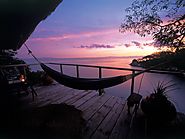
Much of the area around Cape Maclear, including several offshore islands, is part of Lake Malawi National Park, one of Africa's few freshwater aquatic parks and a Unesco World Heritage Site. When organising activities on the lake, check if prices include the park entrance fee.

Sossusvlei, a large ephemeral pan, is set amid red sand dunes that tower up to 325m above the valley floor. It rarely contains any water, but when the Tsauchab River has gathered enough volume and momentum to push beyond the thirsty plains to the sand sea, it’s completely transformed. The normally cracked dry mud gives way to an ethereal blue-green lake, surrounded by greenery and attended by aquatic birdlife, as well as the usual sand-loving gemsboks, and ostriches.
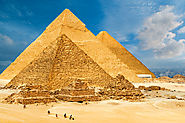
The last remaining wonder of the ancient world; for nearly 4000 years, the extraordinary shape, impeccable geometry and sheer bulk of the Giza Pyramids have invited the obvious questions: ‘How were we built, and why?’ Centuries of research have given us parts of the answer.
Built as massive tombs on the orders of the pharaohs, they were constructed by teams of workers tens-of-thousands strong.
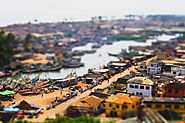
Forever haunted by the ghosts of the past, Cape Coast is one of Africa's most culturally significant spots. This former European colonial capital, originally named Cabo Corso by the Portuguese, was once the largest slave-trading centre in West Africa.
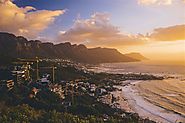
A coming-together of cultures, cuisines and landscapes, there's nowhere quite like Cape Town, a singularly beautiful city crowned by the magnificent Table Mountain National Park.

The parched alter ego of the Okavango Delta, the Kalahari is a primeval landscape, recalling in stone, thorns and brush the earliest memories of the human experience. This impression of a land where time began finds voice in the hot winds and the snap of thorn bush under a San tracker’s feet in the Kalahari. It is the timeless roar of a Kalahari lion resonating across the still desert air.
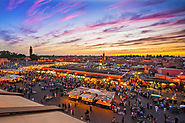
Think of it as live-action channel-surfing: everywhere you look in the Djemaa el-Fna, Marrakesh’s main square, you’ll discover drama in progress. The hoopla and halqa (street theatre) has been non-stop here ever since this plaza was the site of public executions around AD 1050 – hence its name, which means ‘assembly of the dead’.
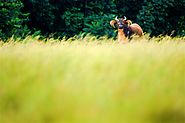
Loango is known justifiably as 'Africa's last Eden'. Here, warm streams criss-cross pockets of thick forest and salty savannah, while vast island-dotted lagoons and miles of white-sand beach provide habitat for all manner of creatures. It's perhaps best known for its mythic surfing hippos, but you'll also find the largest concentration and variety of whales and dolphins in Gabon's waters, elephants wandering the beaches, western lowland gorillas in the forests and an assortment of rare mammals cavorting in the savannah. If your pockets can take it, Loango is one of the best wildlife-watching destinations on the planet.
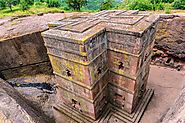
Lalibela (ላሊበላ) is history and mystery frozen in stone, its soul alive with the rites and awe of Christianity at its most ancient and unbending. No matter what you’ve heard about Lalibela, no matter how many pictures you’ve seen of its breathtaking rock-hewn churches, nothing can prepare you for the reality of seeing it for yourself. It’s not only a World Heritage site, but truly a world wonder.

The world-renowned Masai Mara National Reserve needs little in the way of introduction. Its tawny, wildlife-stuffed savannahs are familiar to anyone who has watched nature documentaries. Reliable rains and plentiful vegetation underpin this extraordinary ecosystem and the millions of herbivores it supports. Wildebeest, zebras, impalas, elephants, Masai giraffes and several species of gazelle all call the Mara home. This vast concentration of game accounts for high predator numbers, including cheetahs, leopards and the highest lion densities in the world.
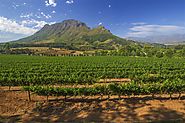
Venturing inland and upwards from Cape Town you’ll find the Boland, meaning ‘upland’. It’s a superb wine-producing area, and indeed the best known in South Africa. The magnificent mountain ranges around Stellenbosch and Franschhoek provide ideal microclimates for the vines.
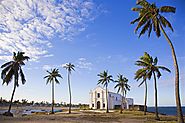
Dhows shifting silently through shallow seas, bruised colonial buildings withering elegantly in the tropical heat, and the voices of a church choir competing with the muezzin’s call to prayer. You’ll encounter all this and more within the crowded confines of Mozambique Island, one of the historical highlights of Africa, a fragrant melange of African, Portuguese, Swahili, French and Goan flavours left to mellow in the iridescent waters of the Indian Ocean for centuries.
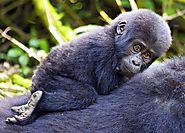
As names go alone, there can hardly be a more evocative African destination than the so-called Impenetrable Forest of Bwindi. But unlike many other alluringly named places, this one is just as magnificent as it sounds. A swathe of steep mountains covered in thick, steamy jungle, the 331-sq-km World Heritage–listed Bwindi Impenetrable National Park is one of Africa’s most ancient habitats, even surviving the last Ice Age as most of the continent's other forests disappeared.
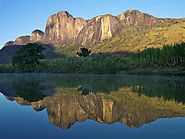
Andringitra (An-drintch) is a majestic central mountain range with two gorgeous valleys on either side, the Namoly and the Tsaranoro (sometimes called the Sahanambo, for the river that runs through it), forming a paradise for walkers and climbers.
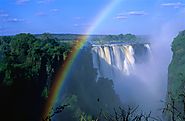
Taking its place alongside the Pyramids and the Serengeti, Victoria Falls (Mosi-oa-Tunya – the ‘smoke that thunders’) is one of Africa’s original blockbusters. And although Zimbabwe and Zambia share it, Victoria Falls is a place all of its own.As a magnet for tourists of all descriptions – backpackers, tour groups, thrill seekers, families, honeymooners – Victoria Falls is one of Earth’s great spectacles.
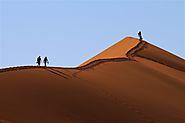
Appropriate for this vast country with its epic landscapes (its number-one tourist attraction) Sossusvlei still manages to feel isolated. The dunes, appearing other-worldly at times, especially when the light hits them just so near sunrise, are part of the 32,000-sq-km sand sea that covers much of the region. The dunes reach as high as 325m, and are part of one of the oldest and driest ecosystems on earth.
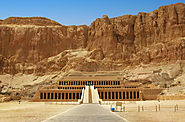
The west bank of Luxor had been the site of royal burials since around 2100 BC, but it was the pharaohs of the New Kingdom period (1550–1069 BC) who chose this isolated valley dominated by the pyramid-shaped mountain peak of Al-Qurn (The Horn). Once called the Great Necropolis of Millions of Years of Pharaoh, or the Place of Truth, the Valley of the Kings has 63 magnificent royal tombs, each quite different from the other.
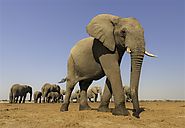
Etosha National Park, covering more than 20,000 sq km, is one of the world’s great wildlife-viewing venues. Unlike other parks in Africa, where you can spend days looking for animals, Etosha’s charm lies in its ability to bring the animals to you. Just park your car next to one of the many water holes, then wait and watch while a host of animals – lions, elephants, springboks, gemsboks etc – come not two by two but by the hundreds.
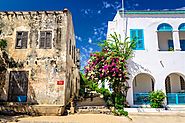
Dakar is a city of extremes, where horse-cart drivers chug over swish highways and gleaming SUVs squeeze through tiny sand roads; where elegant ladies dig skinny heels into dusty walkways and suit-clad businessmen kneel down for prayer in the middle of the street. Once a tiny settlement in the south of the Cap Vert peninsula, Dakar now spreads almost across its entire triangle, and keeps growing.
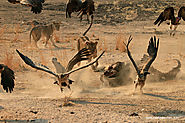
For scenery, variety and density of animals, South Luangwa is the best park in Zambia and one of the most majestic in Africa. Impalas, pukus, waterbucks, giraffes and buffaloes wander on the wide-open plains; leopards, of which there are many in the park, hunt in the dense woodlands; herds of elephants wade through the marshes; and hippos munch serenely on Nile cabbage in the Luangwa River. The bird life is also tremendous: about 400 species have been recorded.
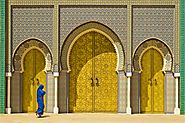
An ancient breeding ground for scholars and artisans, imams and gourmands – Fez is a supremely self-confident city with a historical and cultural lineage that beguiles visitors. And there is something intangibly raw about a place where 70,000 people still choose to live in the maelstrom of a medina so dark, dense and dilapidated that it remains the world's largest car-free urban area.
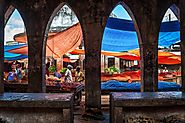
Zanzibar Town, on the western side of Zanzibar (Unguja) island, is the Zanzibar Archipelago's heart and the first stop for most travellers. It is divided into two halves by Creek Rd, which separates the old Stone Town (Mji Mkongwe – the main destination for visitors) from the 'Other Side’ or Ng’ambo, with its offices, apartment blocks and crowded neighbourhoods.
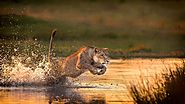
Welcome to one of Africa’s most extraordinary places. There is something elemental about the Unesco World Heritage–listed Okavango Delta: the rising and falling of its waters; the daily drama of its wildlife encounters; its soundtrack of lion roars, saw-throated leopard barks and the crazy whoop of a running hyena; and the mysteries concealed by its papyrus reeds swaying gently in the evening breeze.
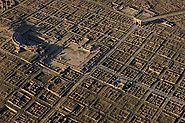
One of the finest Roman sites in existence, the ruins of Timgad stretch almost as far as the eye can see over a plain that in winter is cold and desolate and in summer hot and tinder-dry. Its perfect preservation has made it a Unesco World Heritage Site – take the time to walk around slowly, inhabit the place and Timgad will spring to life.

Ramses III’s magnificent memorial temple of Medinat Habu, fronted by sleepy Kom Lolah village and backed by the Theban mountains, is perhaps one of the west bank's most underrated sites. This was one of the first places in Thebes closely associated with the local god Amun. At its height, Medinat Habu contained temples, storage rooms, workshops, administrative buildings, a royal palace and accommodation for priests and officials.

Born and brought up in Kerala, India. Now in Mumbai, India doing first year of my Masters in Film Studies (M.A)..